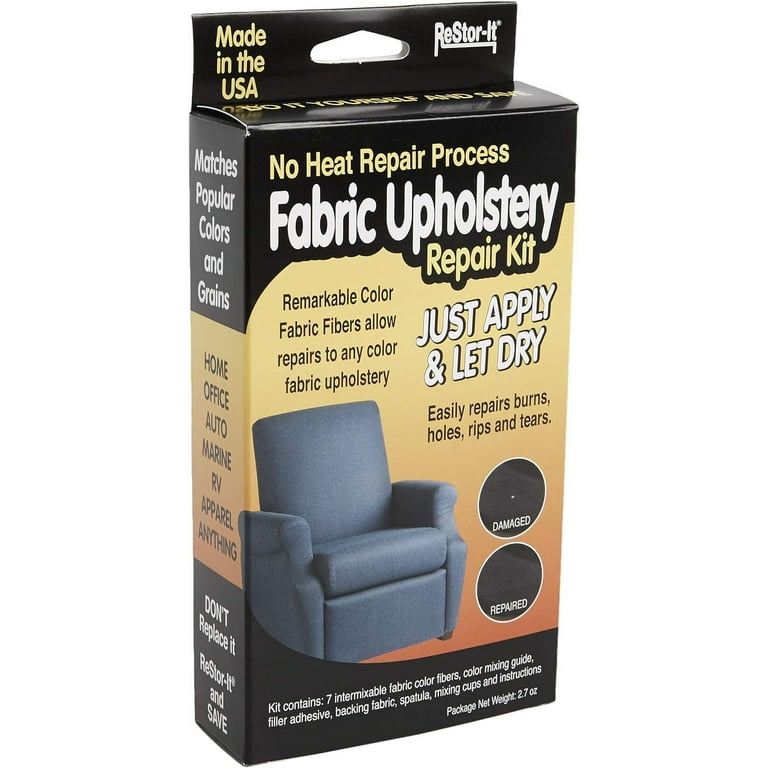The Ultimate Guide to Upholstery Repair Service Strategies
In the world of furnishings maintenance, the art of furniture repair is a skill that can revive worn-out pieces and preserve cherished personal belongings. As we browse the world of upholstery repair techniques, we come across a myriad of methods that can transform a weary couch or chair into a rejuvenated focal factor of an area. From analyzing the damages to diligently fixing openings and splits, each step in the procedure holds the essential to reviving furniture to its previous glory. Remain tuned as we decipher the details of this craft and reveal the secrets to understanding furniture fixing techniques that will certainly elevate your furnishings reconstruction endeavors.
Assessing Furniture Damages
When examining upholstery damage, it is vital to perform a detailed evaluation to precisely identify the level of the issues present. Begin by visually checking the furniture for any kind of visible tears, splits, discolorations, or discoloration.
Next, analyze the hidden structure of the upholstery to check for any type of damages to the structure, springtimes, or extra padding. Sometimes, the damage may not be quickly visible externally however can substantially influence the overall honesty of the upholstery. By thoroughly taking a look at both the outside furniture and interior parts, you can guarantee that all concerns are identified and properly attended to during the repair process.
In addition, take into consideration the type of furniture product utilized as various materials and natural leathers might need details fixing strategies. upholstery repair. Recognizing the material properties will aid in picking the most suitable repair work techniques and items to accomplish optimum results
Necessary Devices and Materials
To effectively conduct furniture repairs, having the ideal devices and materials is vital for accomplishing expert results. Vital tools for furniture repair include a staple gun for safeguarding fabric, upholstery needles and thread for stitching, scissors for reducing fabric, a rubber mallet for touching in furniture parts, and pliers for eliminating old staples and nails. By guaranteeing you have the needed devices and materials before starting a furniture repair task, you can work efficiently and properly to recover furniture to its former magnificence.
Preparing the Furniture Surface Area
Preparation of the furniture surface is an essential preliminary action in making sure the effective outcome of any kind of upholstery fixing task. Prior to beginning any repair job, it is necessary to extensively cleanse the furnishings surface area to eliminate dirt, dirt, and any kind of various other debris that could hinder the attachment of new materials. This can be done utilizing a vacuum cleaner, a soft brush, or a damp fabric, relying on the sort of furnishings and the degree of dust existing.
When the surface is tidy, any broken or loosened upholstery fabric, padding, or springtimes must be carefully removed. This action is important to guarantee that the new products adhere firmly and that the fixed furniture keeps a professional and smooth appearance. Furthermore, any type of old staples or tacks must be taken out, and the surface should be checked for any kind of architectural damages that may need to be attended to prior to continuing with the repair.

Repairing Tears and Openings
After ensuring the furniture surface is complimentary of dirt, particles, and dirt and removing any type of loose or damaged furniture products, the following step in upholstery repair involves addressing tears and openings in the material. Repairing tears and openings in upholstery can help extend the life of your furnishings and restore its aesthetic allure. One typical technique for repairing small rips and openings is by utilizing a needle and string to stitch the edges of the broken area back together. For bigger openings or tears, a spot of material can be used to cover and enhance the damaged section (upholstery repair). Textile adhesive or adhesive can also be utilized to secure the patch in location. It is crucial to carefully match the color and texture of the patch material to the initial upholstery for a seamless fixing. When the tear or opening is repaired, ensure that the area is properly cleansed and dried prior to using the furnishings once again to stop any type of further damage.
Getting Rid Of Stains and Odors
Attending to persistent spots and lingering odors in furniture calls for a targeted and complete method to ensure efficient reconstruction of the check out this site textile's appearance and freshness. Spots can be created by numerous substances such as food spills, pet accidents, or beverage mishaps, while odors often stem from smoke, pet dander, or spills penetrating the furniture fibers. Normal maintenance and punctual attention to spills can help in preventing ingrained discolorations and odors, protecting the upholstery's condition.

Verdict
To conclude, grasping furniture fixing techniques requires cautious analysis of damages, the usage of important tools and products, appropriate prep work of the furnishings surface area, and the skilled repair work of splits, smells, openings, and discolorations. By adhering to these actions, people can properly lengthen the life and recover of their furnishings.

Important tools for furniture fixing consist of a staple gun for securing textile, furniture needles and thread for stitching, scissors for reducing textile, a rubber mallet for tapping in furnishings elements, and pliers for removing old Source staples and nails. By ensuring you have the required devices and products before beginning an upholstery repair work project, you useful reference can function efficiently and effectively to bring back furniture to its previous glory.
Prep work of the furniture surface area is a critical preliminary step in making sure the successful end result of any upholstery repair work project.After making certain the furnishings surface is cost-free of dirt, dirt, and particles and removing any type of broken or loosened upholstery products, the following step in furniture repair includes resolving tears and holes in the textile - upholstery repair. Repairing splits and holes in furniture can help prolong the life of your furnishings and restore its aesthetic allure